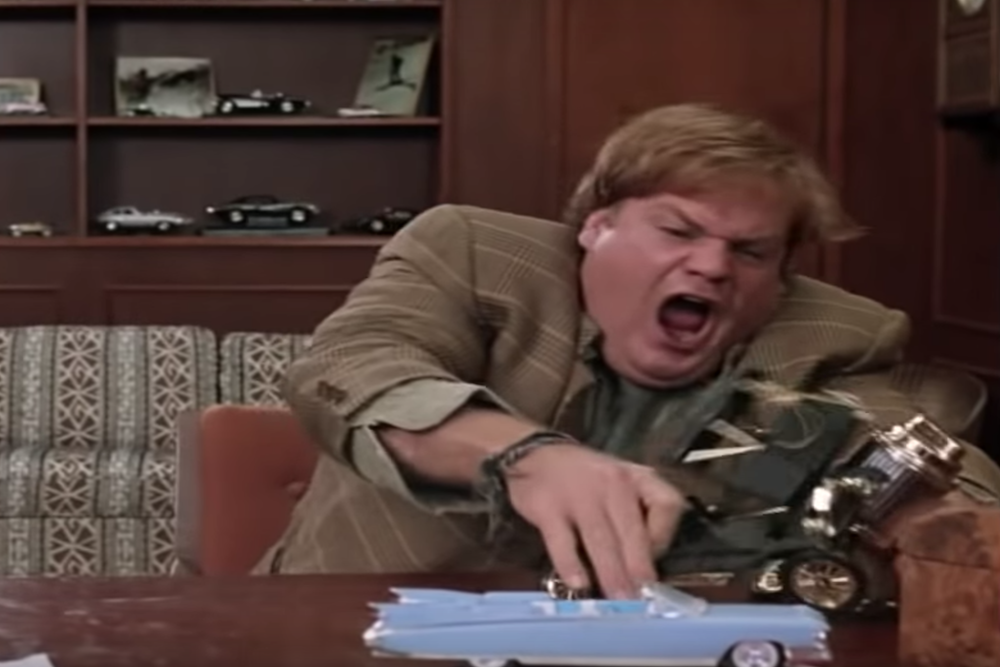When ‘Tommy Boy’ Reminded Us About Brake Safety

In the ‘90s buddy comedy “Tommy Boy”, Chris Farley finds himself in front of an executive interested in buying brake pads from Farley’s titular character, Tommy Callahan.
Using the executive’s presumably expensive--and deeply sentimental--collection of model cars as props, Callahan plays out a scenario in which the family vehicle can’t stop in time to avoid a discarded truck tire in the roadway. His grisly reenactment ends with one of the model cars in flames, and the enraged executive kicking Callahan out of the office.
As inelegant as Callahan’s portrayal may have been, his point about brake safety and holds true.
Months can pass without us giving our brakes a second thought. Then, one evening commute, you’re cruising at a comfortable clip and sea of red tail lights grows in front of you.
It’s during these moments--when we’re practically standing on the brake pedal with both feet in hopes of avoiding a collision--that we remember exactly how important it is to have reliable brakes.
• Rotors (Disc brakes). As the name implies, these metallic discs rotate as the wheels are in motion. Rotors sit behind the wheel assembly and can sometimes be seen through the vehicle’s rims. Pressing the brake pedal activates clamps on both sides of the rotor.
Friction created during braking produces searing heat that eventually scars the rotors. While they can be resurfaced, rotors eventually reach a point where replacement is the only option.
Rotors should be checked during a tire rotation or multipoint inspection.
• Brake pads. Made from a variety of metals, brake pads squeeze the rotor whenever the brake pedal is pushed. Brake pads typically last between 20,000 and 40,000 miles, perhaps much longer with high quality brake pads.
But even if you aren’t watching the odometer closely, brake pads are designed to alert drivers when they’re wearing thin.
A small metal piece pings or “chirps” when it makes contact against the brake disc. Warning: Listen for that squealing, otherwise you could do serious damage to your brakes. Paying attention to and acting on cues like these help keep routine services from mutating into major repairs.
• Brake fluid. Stopping a car depends on hydraulics, and brake fluid is literally the system’s lifeblood. Pushing the pedal forces fluid through the lines, causing components to expand against the wheels, stopping the vehicle.
How often your brake fluid needs to be replaced depends on a number of factors, such as your driving habits and environmental variables like heat and humidity. Most vehicles don’t offer gauges or sensors to track brake fluid. So having your fluid inspected by a certified auto mechanic is crucial.
• Calipers. Part of a disc brake system, calipers push the brake pads against the rotors when the brake pedal is pushed. This resulting friction between the pads and rotors slows--and ultimately stops--the vehicle.
Waiting too long to replace worn brake rotors puts extra stress on the calipers. The calipers will rub against uneven rotors if the components aren’t parallel to one another, creating a vibration that can be felt in the steering wheel during stops.